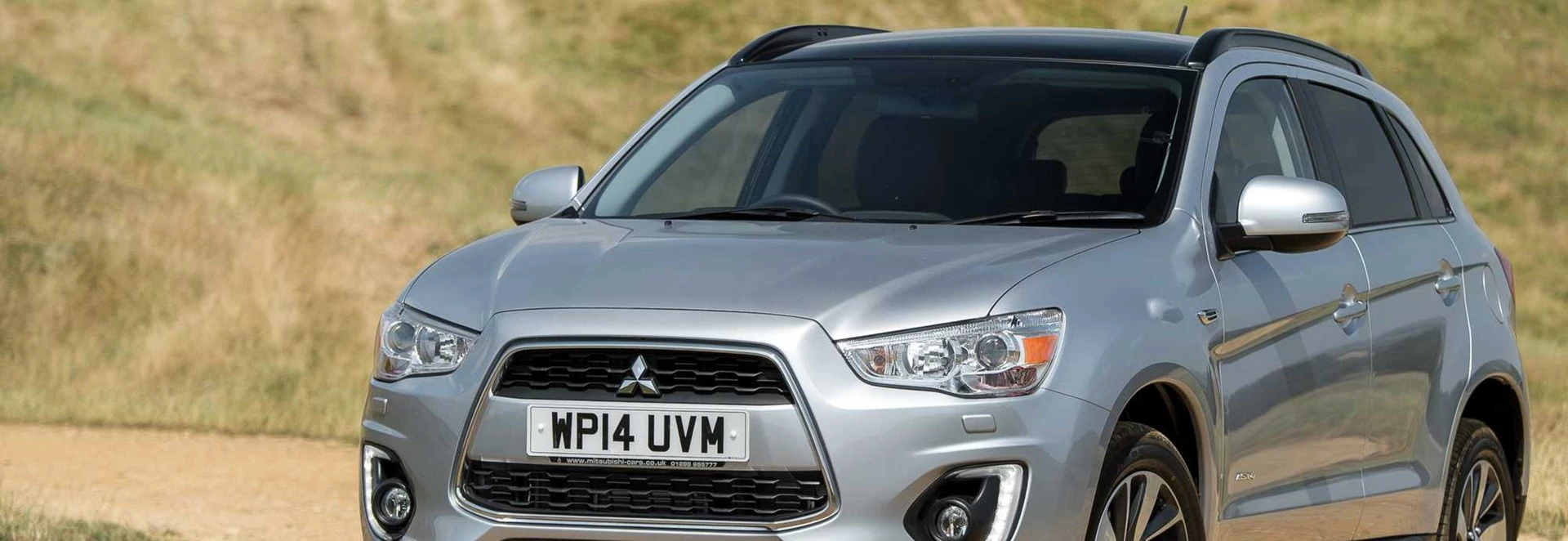Launched in 2010, the Mitsubishi ASX was the first crossover from a manufacturer renowned for building traditional 4x4s like the Shogun. Compared to these mud-pluggers it’s far better suited to driving on the road, with better handling and lower running costs.
But the crossover segment has grown hugely over the last few years and models like the Skoda Yeti and Nissan Qashqai have just been re-released, so can the ASX keep up?
Performance
Two diesel engines are available, a 1.8-litre with 114bhp and a six-speed manual gearbox and a 2.2-litre with 147bhp coupled with an automatic transmission. Both versions accelerate from 0-62mph in just under 11 seconds, and we’d recommend the smaller engine because it’s both smoother and quieter. The 1.8-litre is available with front- or four-wheel drive, while the larger engine comes with four-wheel drive as standard.
There’s also a 1.6-litre front-wheel drive petrol version with 115bhp, but it’s slower than the diesel versions, taking 11.4 seconds to reach 62mph.
In normal conditions the four-wheel drive system sends almost all its power to the front wheels, but it can split power 50:50 between the front and rear axles. In ‘4WD LOCK’ mode 1.5 times the torque can be sent to the rear wheels to further improve traction.
Ride and Handling
Body roll is fairly well-contained and the ASX is pretty good at soaking up bumps
The ASX offers a safe and confidence inspiring drive, but it fails to reward like the Skoda Yeti can. While in the Yeti you almost forget you are driving something tall, the ASX has more of an old-school 4x4 feel about it. It’s best suited to a steady driving style, especially if you choose the automatic, with a smooth but lethargic gear change. Body roll is fairly well-contained and the ASX is pretty good at soaking up bumps. It also proves comfortable on the motorway, although this is spoilt somewhat by excessive tyre noise, which was quite noticeable in our test car.
Interior and Equipment
The Mitsubishi ASX is based on the same platform underpinning the rally-bred Lancer Evolution sports saloon.
With a tall seating position and steering wheel which adjusts for reach and rake, it’s easy for most people to get comfortable in the ASX. The dashboard has a minimalist feel, with three attractive dials for the air-conditioning and a piano black finish. Some of the plastics feel quite cheap though, and the Kenwood touch-screen infotainment system fitted in our test car was fiddly to use. A tall roofline means head room shouldn’t be a problem in any seat, while the 416-litre boot is larger than you’ll find in a family hatchback. It also matches the Yeti’s boot, but the Qashsqai is a little bigger, with 430 litres behind the rear seats.
Cost
Diesel versions start from around £19k and trim levels are named 2, 3 and 4
The petrol returns a respectable 47.1mpg, while the large diesel should manage 48.7mpg but emits 153g/km of CO2, costing £180 in annual road tax. Your best bet for low running costs is the front-wheel drive 1.8-litre diesel with 56.5mpg and 131g/km of CO2, costing £130 each year to tax. But, some versions of the Yeti can be taxed from only £30 each year. The entry-level ASX starts from just over £15k, but we’d recommend avoiding the petrol model because it feels underpowered and won’t be as desirable on the used market. Diesel versions start from around £19k and trim levels are named 2, 3 and 4. The entry trim includes alloy wheels, air-con and remote keyless entry, so isn’t too basic. The ASX 3 trim brings climate control, parking sensors, cruise control, auto lights and wipers and heated front seats. The top ASX 4 has a long equipment roster, boasting a reversing camera, sat-nav, DAB, Bluetooth and a panoramic sunroof. It’s worth noting though, the aftermarket infotainment system doesn’t feel as user friendly as we’d like.
Our Verdict
The Mitsubishi ASX is easier to drive than a traditional 4x4 and more economical, but still offers the higher seating position and rugged feel many customers love. But, even after a facelift, the ASX feels slightly more dated than its top rivals the Qashqai and Yeti. Still, if you can get a good deal, the ASX should prove to be a sturdy set of wheels and it’s also very well-equipped. Despite its lower on-paper power, the 1.8-litre diesel is our pick thanks to its better economy and reasonable performance.




